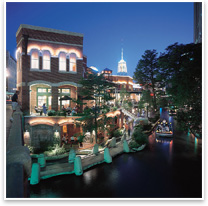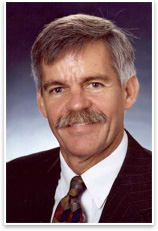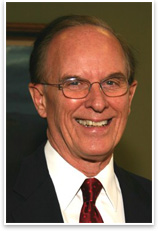
 Mayors to Share Perspectives on San Antonio Growth Mayors to Share Perspectives on San Antonio Growth
Summary: Among the wide-ranging learning opportunities at the AIA 2007 National Convention and Design Exposition will be continuing education programs that offer examples of real-world projects employing tangible methods and materials. Who better to make these connections than three former mayors of San Antonio—two with planning and land development backgrounds—who will discuss the challenges and opportunities they faced in planning their city’s explosive growth. In a seminar sponsored by AIA San Antonio, the mayors will present case studies of specific development strategies that promoted economic opportunity while protecting the natural resources that sustain the community. Former mayors Nelson Wolff; Howard Peak, an urban planner and developer; and Ed Garza, who received a bachelor’s in landscape architecture and a master’s of science in land development, have undertaken strong initiatives by balancing economic development with betterment of citizens’ lives. The mayors will present case studies of specific development strategies as well as a panel discussion of the political will necessary to realize these initiatives, including:
Specifically, former mayor Peak, a planner by trade, will discuss the San Antonio River Improvements Project, an expansion of the River Walk to encompass 13 miles of the river north and south of downtown into a linear park system and plans for similar parklands along other major waterways. He will also discuss how an inventive collaborative effort between the city and the U.S. Air Force has converted a threatened air base into a thriving technology business park. Brooks City Base has become an engine for development in a neglected quadrant of the city. Former Mayor Garza, who is currently heading the San Antonio office of the national landscape and development firm EDAW Inc., will focus on the economic coup of a new Toyota manufacturing plant as a catalyst for inventive zoning and master-planning of a 57-square-mile area on the city’s southern fringe. City South promises to balance growth through sustainable development strategies while maintaining the rural character so infused in this region of the city.
One advanced perspective What is the architects’ place in this development? In addition to advocacy, the most obvious place is in design along the river once the improvements are in place, Peak notes. “Once the economy is bolstered by these projects, and as quality of life is improved, the benefits will extend far beyond just the narrow location of where these public improvements are to be virtually citywide. [The architects’] market should improve as well.” “I look forward to being able to talk about some great things going on in San Antonio. While it may not necessarily have applicability everywhere—not every city has a river flowing through it, for example, or even the creeks we are using as the base for our linear parks program, or even a military installation that is being changed to private use—I think the concepts would apply elsewhere. You have to determine what it is that you have as resources natural or built and protect them and make the most of them in other ways.” |
||
Copyright 2007 The American Institute of Architects. All rights reserved. Home Page |
||
home
news headlines
practice
business
design
recent related
› Some Things to Know on Applying PV: An AIA Expo2007 Preview
› Convention Speakers to Accentuate Sustainability
› Three More Reasons to Visit San Antonio
The AIA National Convention and Design Expo2007 takes place at the San Antonio Convention Center May 3–5. For the most up-to-date convention information and to register online, visit the AIA 2007 National Convention Web site.
Continuing Education Goes Paperless
To help create an environmentally sustainable convention and reduce waste, printed handouts will not be provided at the continuing education seminars. As an alternative, the AIA convention Web site will feature the most up-to-date version of seminar materials.
• Review the seminar materials online to ensure the programs suit your interests.
• Link to additional materials and resources.
• Eliminate the need to carry materials around the convention or on the trip home.
One week prior to the event, you will receive an e-mail link to www.aia.org/conted_convention where you will be able to download all available speaker handouts the AIA received in advance. Any handouts that are provided after the deadline or on-site will be posted to the Web site following the convention. If you prefer to print copies during the convention, the AIA Information Desk will help you locate the nearest business center.
After the conference, you may order a CD-ROM of audio recordings and seminar materials. In addition, many of the top-rated seminars will be featured in AIA eClassroom.

 Mayors speak
Mayors speak Former Mayor Nelson Wolff places a strong emphasis on economic development and its relationship to livability. As the current county judge, Wolff continues to push for reinvestment in the central city while protecting the region’s environmental assets. As mayor, Wolff led the effort to locate the downtown campus for the University of Texas and build Wolff Baseball Park, the downtown library, and the new City Hall chambers. He also led the effort to pass the largest parks bond issue in city history and secured financing and approved convention expansion plans that doubled the size of the convention center.
Former Mayor Nelson Wolff places a strong emphasis on economic development and its relationship to livability. As the current county judge, Wolff continues to push for reinvestment in the central city while protecting the region’s environmental assets. As mayor, Wolff led the effort to locate the downtown campus for the University of Texas and build Wolff Baseball Park, the downtown library, and the new City Hall chambers. He also led the effort to pass the largest parks bond issue in city history and secured financing and approved convention expansion plans that doubled the size of the convention center.